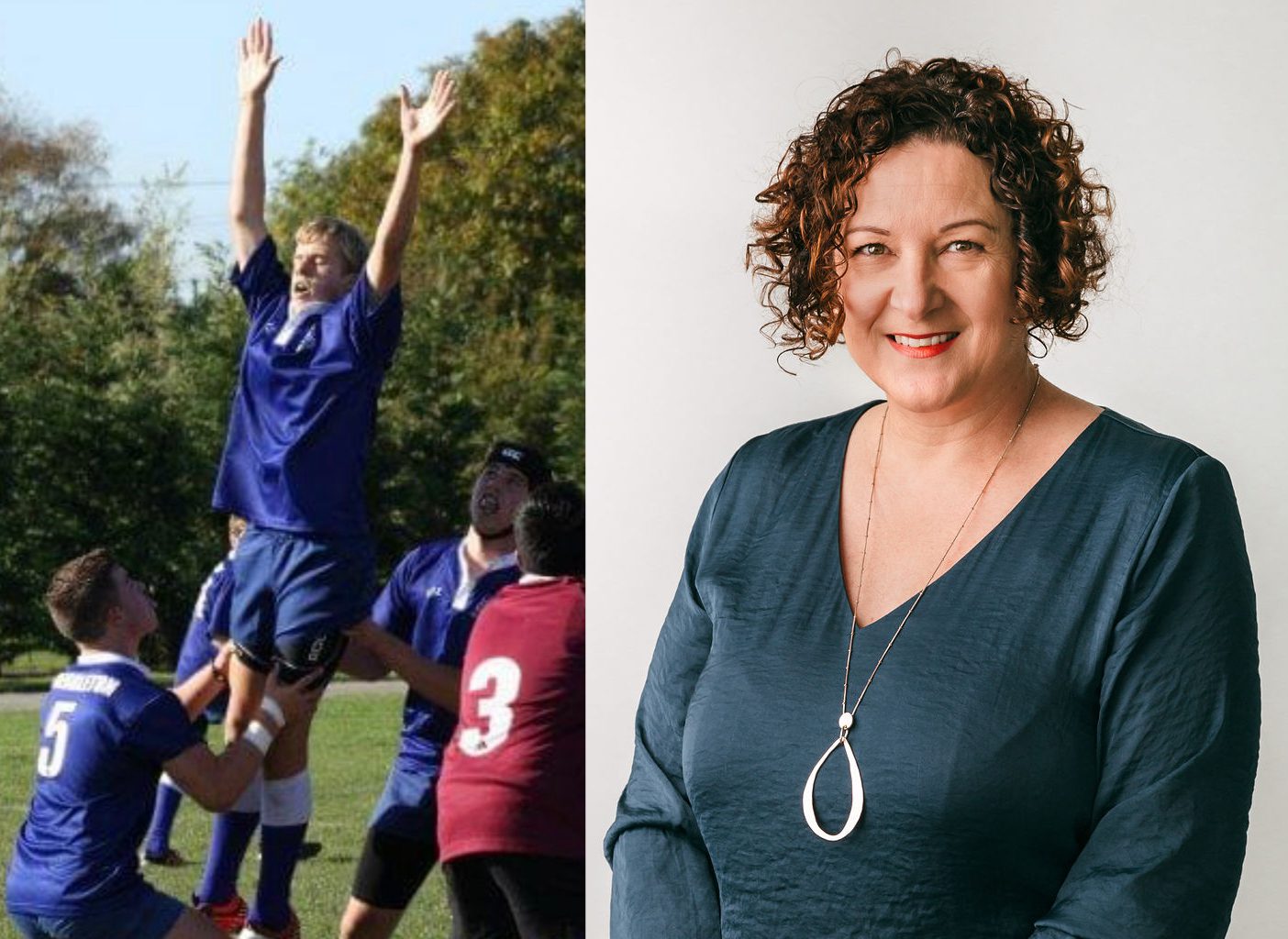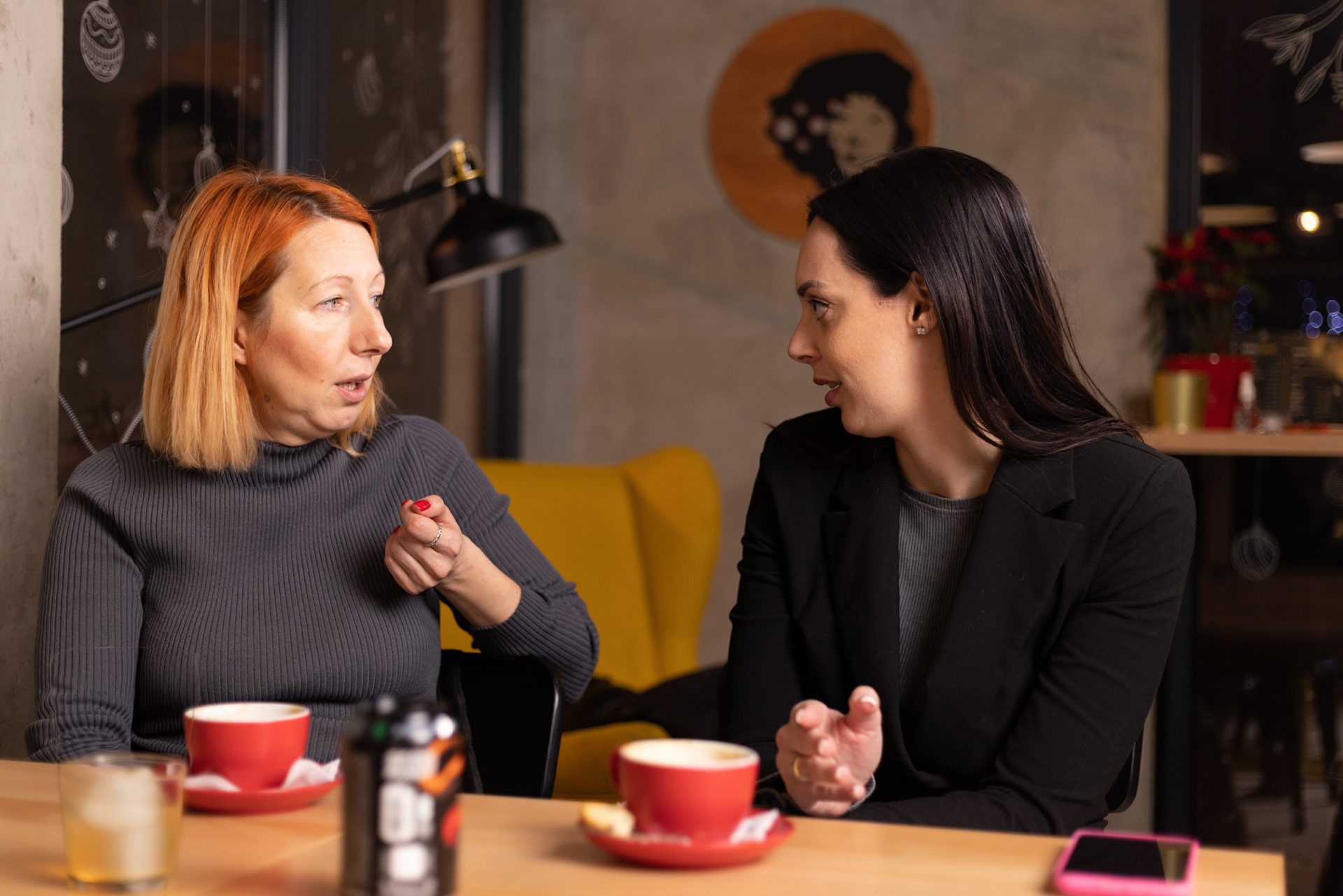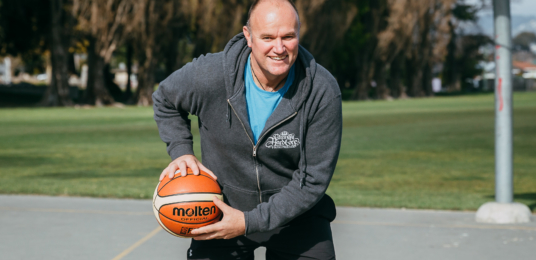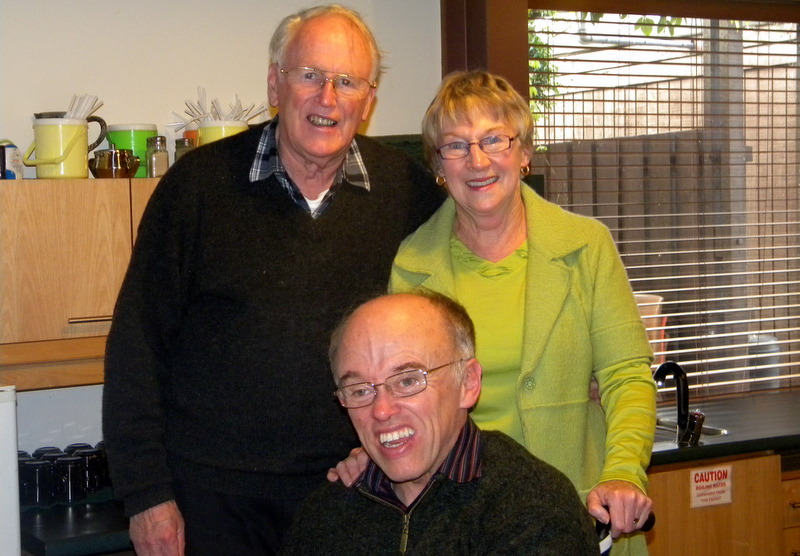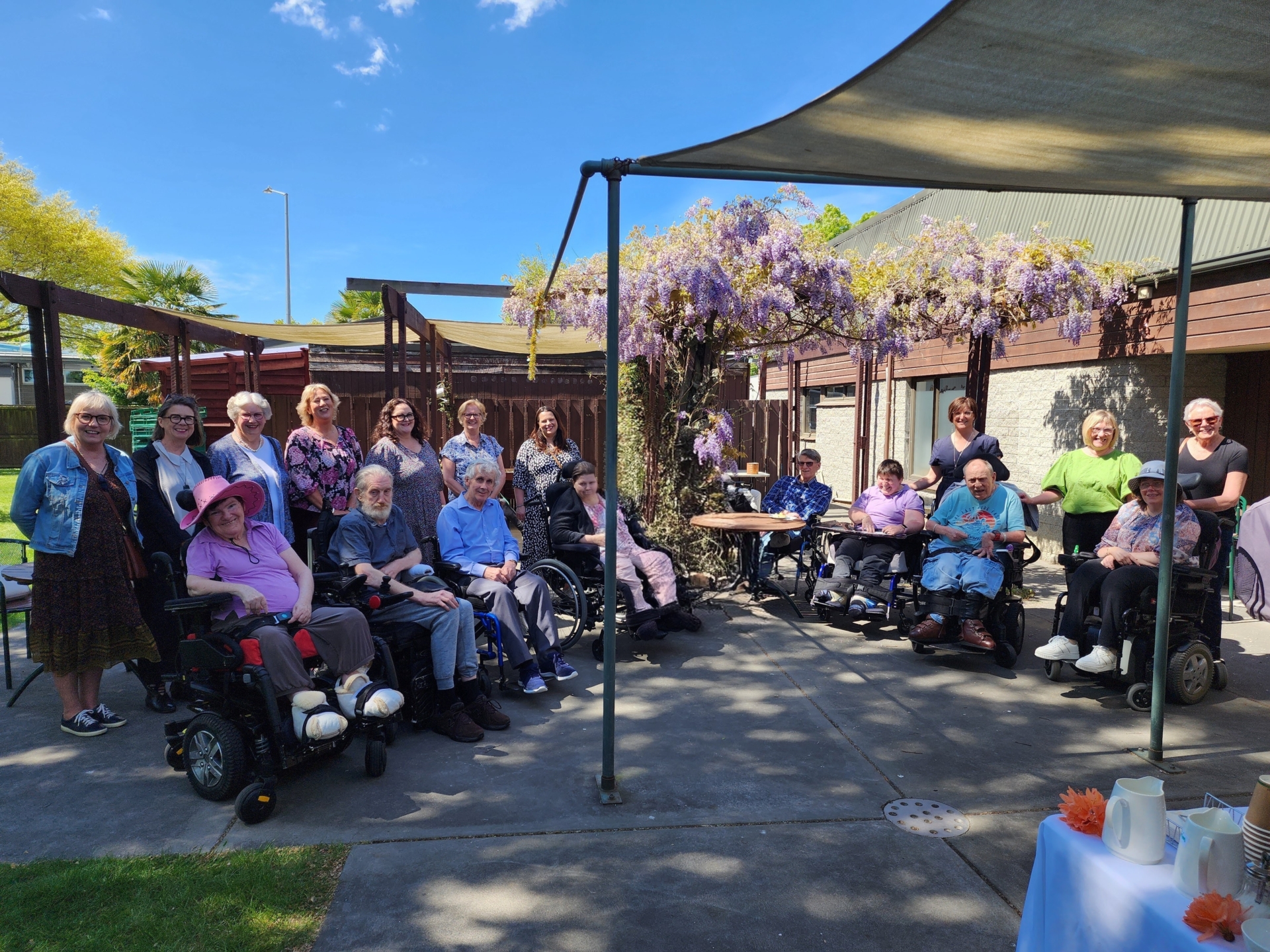Pat is Clinical Manager Community Rehabilitation for Laura Fergusson Brain Injury Trust. She is also a physiotherapist who has worked in the traumatic brain injury and concussion field for over 30 years, including vestibular rehabilitation. Her son Rob currently works as a rehabilitation coach for LFBIT, and this story is Pat’s perspective on the concussion injuries he experienced as a teenager.
When Rob had his first concussion in year 9, he called me from the bus back to school from playing school rugby at Hagley Park and said, “I got knocked out … legit knocked out.” Not what I was expecting or wanted to hear. He sounded OK though, so I wasn’t too worried. I knew we could deal with any symptoms he may have. I mean, it’s what I do every day, right?
No one had seen Rob fall and hit his head on the hard ground. He missed the teams playing down to the other end of the field to score a try, and the team and coach only noticed when he remained sitting where he had fallen. They helped him off the field and that was about it. No other attention back on the bus at the end of the game, no contact made with us. Later, the school was made aware of their poor communication.
Rob recovered pretty well really – a few days off school, some vestibular treatment for dizziness and advice from Mum.We witnessed the second concussion for ourselves the next season. Rob was playing for Prebbleton club at the home grounds and had what looked like a glancing clash of cheeks with a teammate. In fact, when he got up and was wobbly on his feet, I thought he had injured his knee. He was distressed and helped to the sideline. Then it was obvious it was not his knee. He could not tell us what the score was, what day it was or where he was. That was scary for him and for us. This time, he had a week off school, returning for half days for another week, before returning full-time. Not too drastic in year 10.
We allowed longer than the recommended time off rugby and followed the return to sport protocols, building up to match fitness without symptoms of any kind.
In the last few minutes of the last game of that season, he was tackled head on, which ended up as a head clash and concussion number three. Fortunately, the effects at the time were not so bad again and Rob didn’t need any time off school. It was the end of the season so he had plenty of time off rugby before playing again the following season.
The fourth concussion was the worst. This time, the phone call was from the referee of the school game in Darfield, who said Rob got his head on the wrong side of a tackle. Rob couldn’t call because he was in an ambulance on the way to Christchurch Hospital. As well as hitting his head, he had no strength or feeling in his hands. My knees went weak as I walked to my car… another concussion and a possible spinal injury.
When I arrived at the hospital, Rob was being wheeled into emergency. He was awake and in a neck collar. He said that some of the feeling was coming back in his hands, which was a huge relief – that was hopeful. After being examined by great doctors, the decision was made to admit him for X-rays and scans. The brain injury did not seem too bad this time. He mainly had a headache at this stage, his memory and cognition appeared pretty good. The main concern was the spinal injury, but he was gaining strength back in his hands by now so that too seemed to be improving. Fingers and toes crossed.
Rob was admitted into the Orthopaedic Trauma Unit rather than a paediatric bed, which meant he could have specialised nursing care for the suspected neck/spinal injury. They weren’t too worried about his head. He was still in a neck collar and was log-rolled by six staff at a time to keep his spine aligned. But they still needed to rule out any spinal cord injury. It was hard to tell if his concussion was significant, as he was lying very still and not doing anything, but he was awake and alert and the headache was manageable, which was all positive.
After a visit from his Dad and sister and a fairly sleepless night, we settled in for the wait for an MRI. Emergency cases kept coming in and beating Rob to it. By now, he was getting frustrated, not being able to move or get comfortable with the neck collar. Finally, he had the MRI. We now had to wait for it to be read and find out whether there was cord damage and what the plan would be. We were hopeful because, by the end of that day, his strength was pretty much back to normal. A nurse told us the specialist was coming in and would look at Rob’s scans and we should know something by late afternoon. By 10pm, Rob was incredibly uncomfortable, and I was tired and turning into a very grumpy “one of those parents”. I needed to know what was happening. Another nurse heard me, calmly asked what the matter was and within an hour we had a registrar there to say the scan was clear, no cord injury. Hallelujah! As it was after 11pm by then, we stayed another night, but Rob was able to take the collar off and get more comfortable.
The next day, Rob was dizzy when he got up, and a physio came to check him out. She thought that it might be dehydration making him dizzy. I thought, “We’ll check that properly when we get home.” Vestibular rehabilitation was and is still not commonly taught in undergrad physio training so often not looked at as part of concussion management in New Zealand hospitals, although this is changing slowly. An occupational therapist came and did some cognitive assessment, which showed some issues with memory and processing speed but nothing too awful. So he could go home. I asked for a referral to the Concussion Service – it was not offered. Again, this is now slowly changing, and referrals for follow-up input are becoming more common.
Dizziness treated, lots of rest, four weeks off school or part days later and Rob was pretty much recovered. We decided that we needed to be parents and not therapists this time, so a colleague completed the concussion service with him and dealt with the school. That was a very good decision and saved a lot of stress for all of us. School staff tend not to understand concussion like they would a broken leg so often need to hear that professional tell them what is needed. Sometimes they don’t listen to a parent the same.
It was by now near the end of the season, and Rob was not going to play again for now. The registrar at the hospital had said, “After four significant concussions, if it was my son, I would recommend for him to not play rugby again.” Rob was not ready to hear that and neither was his Dad, who was also his coach. Around that time, I came across a movie called Crash Reel about an American Olympic snowboarder who had a significant brain injury when training. It followed his recovery and ultimate decision not to compete again for fear of reinjury. Part of the movie shows him visiting another snowboarder who chose to train again after his own brain injury.
Unfortunately, he did have another traumatic brain injury, resulting in significant and permanent cognitive and physical disability. I watched the movie with Rob, who was profoundly affected by this and made his own decision not to play rugby again. This was a huge decision for him as a very good 14-year-old rugby player with great potential. The next season was particularly hard while his mates started playing, but he loved rugby enough to volunteer to help Dad (Kevin) out with coaching his old team and he was water boy on Saturdays. He loved being part of the team still but missed playing hugely. It was incredibly hard for him, and all we wanted to do was to let him play, but each concussion was affecting him more and the risk was too great.
Unfortunately, that was not his last concussion. While standing on the field at school in year 12, one of the other boys ‘tackled’ him and he hit his head on the hard ground. He was dizzy again and developed headaches. So more time off school and more vestibular treatment from me. Thankfully, he made a full recovery after a few weeks.
My advice for any parent of a child who has a concussion is to seek help. Keep asking for help until you get it. Be that demanding parent if you need to be. We had an advantage being ‘in the business’ but we still needed professionals to be involved, especially with the school. And your kids will tend to listen to the professionals about rest and time off devices much more than you! You also need to follow the advice of professionals when it comes to returning to sport – whether it is the timing of that after one injury, i.e. not too soon, or whether to return at all following several concussions. Who knows whether Rob would have been affected more if he had continued to play, but we could see that he certainly was affected significantly every time he did hit his head, even with what looked like glancing blows. One day, research may show why that is, but for now, we do know that all concussions are real and need to be taken seriously and that recovery can look different for everyone.
